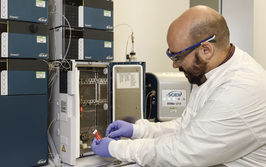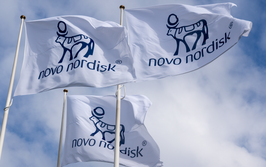Therapeutic Orphans
Neonates have, for too long, been underserved by drug development, potentially missing out on life-giving scientific advances. The International Neonatal Consortium is here to change that – for good.
All medicines should be administered with two aims in mind: to effectively treat a specific disease and to avoid disproportional side effects. But the effects of a medicine given to a newborn baby can vary drastically compared with adults and even other pediatric populations. There is a recognized need worldwide for more research relating to medicinal products and neonates, but despite this, it is still common practice to prescribe medicines to newborns off label. The prescription is often made by extrapolating from the dosing regimens and indications validated in other pediatric populations – and rarely on neonatal pathophysiology.
Clinical pharmacology aims to predict drug-specific (side) effects based on pharmacokinetics and pharmacodynamics. Many of you will be aware that pharmacokinetic studies estimate the relationship between a drug concentration at a specific site and time (looking at what the body does to the drug), whereas pharmacodynamic (PD) studies estimate the relationship between a drug concentration and (side) effects (what the drug does to the body). Because of physiology-related maturation in absorption, distribution, metabolism, and excretion (ADME) processes, pharmacokinetics in newborns and early infancy are very different to other patient groups. Body composition, protein binding and compartment sizes all change during infancy, as well as the metabolic processes for breaking down drugs. Similarly, renal function also displays age-dependent clearance. Age-dependent PD differences have not been well explored, but are known to relate to age-dependent effects or side effects.
Federal US legislation and similar European initiatives have helped to significantly increase the number of pharmacological studies in children, which has resulted in a subsequent increase in medicine label changes. But despite the increase in knowledge of pharmacotherapy in older children, neonates remain therapeutic orphans as too few of these label changes are specific to newborns. Almost all compounds administered or evaluated in neonates are initially developed for other populations and subsequently adapted to the characteristics of neonates (some more successfully than others). Rather than adapting medicines, we need product development plans that specifically consider neonatal pathophysiology. We also need more insight into the disease mechanisms of neonates. And fortunately, steps are being taken to help address both of these points.
As part of the FDA’s Critical Path Initiative (C-path, which aims to drive innovation in the scientific processes through which medical products are developed, evaluated, and manufactured) the International Neonatal Consortium (INC) was initiated last year specifically to accelerate the development of safe, effective therapies for newborns. INC acts as a multidisciplinary forum for the neonatal community to develop consensus statements, including standardization of methods, standard of care, population specific biomarkers, modeling approaches, trial designs, clinical outcome assessment tools and formulation issues. C-Path orchestrates sharing of data, expertise and knowledge among industry, regulatory authorities, government, patient advocacy groups and academia in the pre-competitive space to generate the evidence needed to improve the drug development pathway. The ultimate goal is to improve medical product development efficiencies by identifying pathways that integrate new scientific advances into the regulatory review process.
How are we going to do this? Firstly, we must all work together – stakeholders from research institutions, drug developers, regulatory agencies and patient advocacies all need to unite so that we can forge a regulatory path for evaluating the safety and effectiveness of therapies for neonates. Developing medicines specifically for tiny, fragile babies is no easy task and perhaps it’s no surprise that research in this population has faltered, so as a first step a research agenda has been put forward to cover the prevention and treatment of some of the most serious neonatal medical problems: brain injury (for example, neonatal seizures), lung injury (for example, bronchopulmonary dysplasia) and gastro-intestinal injury (for example, necrotizing enterocolitis), as well as neonatal sepsis, retinopathy of prematurity, and neonatal abstinence syndrome.
In particular at INC, we’re going to develop tools that can be incorporated into clinical trials for neonates. For example, if we can agree on biomarkers or endpoints this should facilitate research and make it easier to draw comparisons. Ultimately, more efficient trials should lead to better treatments.
The INC is a very ambitious consortium, but we believe that it will make a difference. Other consortiums formed as part of C-Path have proven to be very effective in the evaluation of medicines for specific disease entities (1)(2). We hope that we can reshape medicine making for neonates from simply being adapted towards product development that is driven by specific neonatal needs.
- S.G. Amur et al., “Building a roadmap to biomarker qualification: challenges and opportunities,” Biomard. Med., 9(11), 1095-1105 (2015).
- R.L. Woosley, R.T. Myers and F. Goodsaid, “The Critical Path Institute's approach to precompetitive sharing and advancing regulatory science,” Clin. Pharmacol. Ther., 87(5), 530-533 (2010).



















